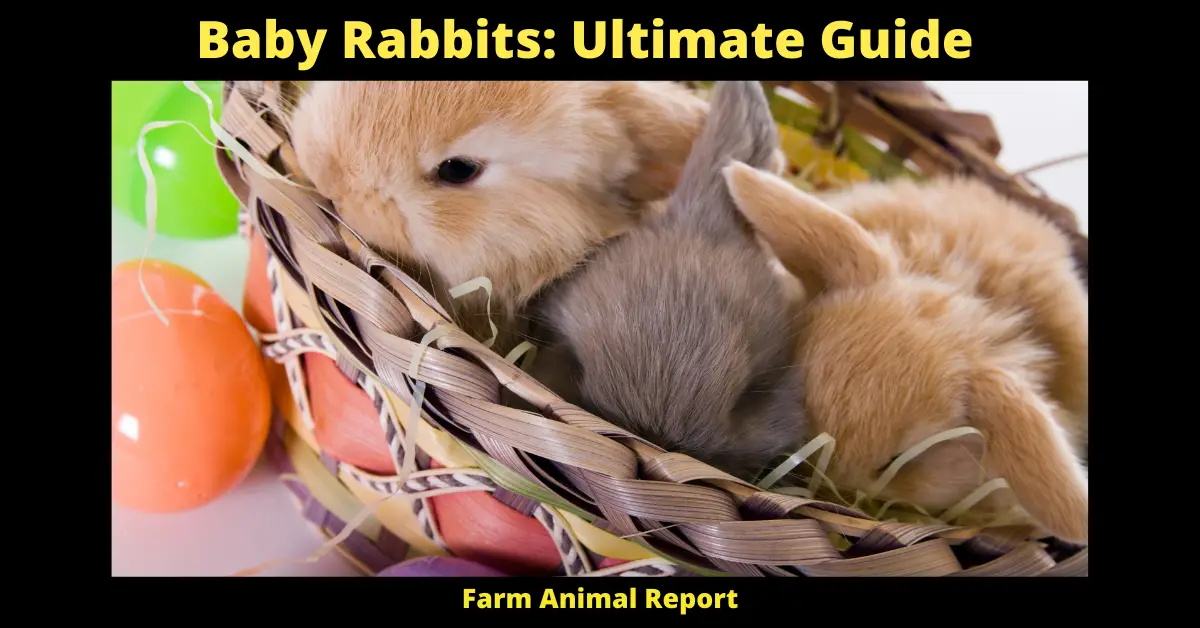As a General rule baby Rabbits are born hairless, with their eyes closed. Baby rabbits drink/eat mother’s milk only at the start. Baby rabbits nurse from their moms while lying on their backs. Baby young bunnies leave the nest when they are three weeks old and roughly the size of a chipmunk
Baby Rabbits
We all love rabbits, and indeed they are adorable. It is possible to make a good living by raising rabbits for the pet or meat markets. Rabbit breeders are well aware that it is critical to the health of their animals as well as the health of their business to monitor a doe’s pregnancy and prepare for the delivery of her offspring. Recognizing the indications of labor in a rabbit doe and being prepared for unexpected situations might help ensure a healthy delivery procedure. Here in this rabbit guide, we will discuss all baby rabbits (from birth to adulthood). So continue reading.
Rabbit Birthing Process
Rabbit breeds of medium to large size reach sexual maturity between 4.2 and 4.5 months of age, while gigantic types reach sexual maturity between 6.5 and 9.5 months. Small breeds (such as the Polish Dwarf) reach sexual maturity between 3.5 and 4.5 months of age. Female rabbits do not release their eggs in response to a hormonal cycle, as humans do, but rather in response to sexual contact with another rabbit. There is a cycle to rabbit mating receptivity; on average, rabbits are receptive to mating 14 out of every 16 days.
Baby Rabbits – When a doe’s vagina is red and wet, she is most fertile. Thus, the does’ vaginal color is white or pale pinkish, and the vaginal fluid has little or no moisture. A veterinary doctor may be able to feel fetuses in the belly of a pregnant doe 12 days after the breeding season has concluded. Although true pregnancy is exceedingly unusual in rabbits, false pregnancy frequently occurs, in which the rabbit exhibits signs of pregnancy despite not being pregnant.
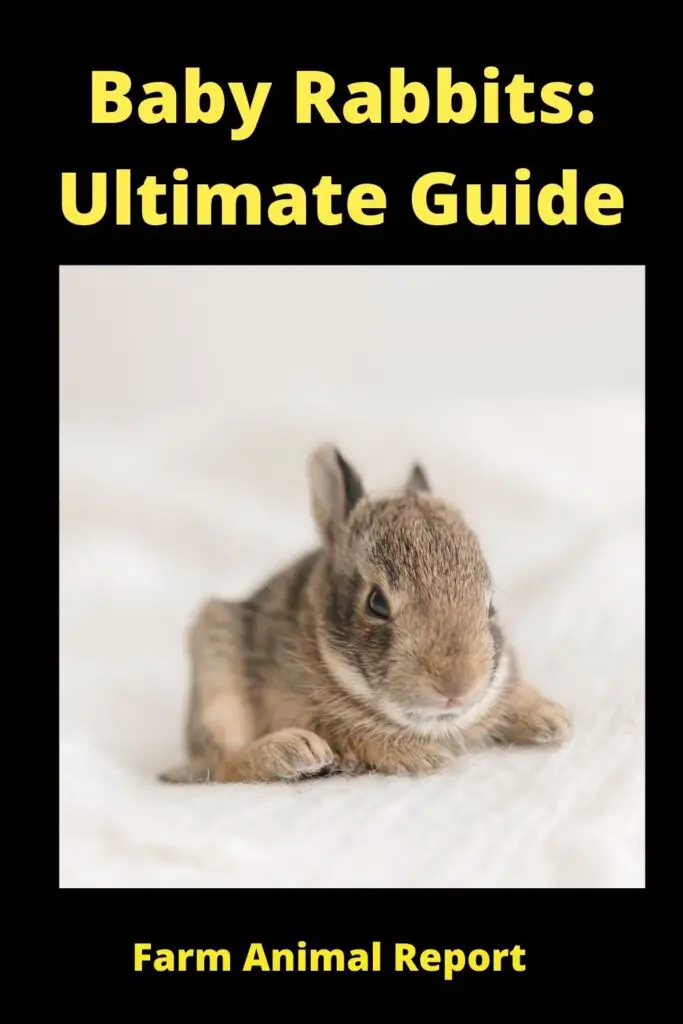
In the United States, pregnancy lasts on average between 32 to 33 days. The study discovered that does with a small litter (usually four or fewer kits) have lengthier pregnancies than does with larger litters. Additionally, if a doe has not given birth by day 33 of her pregnancy, your veterinarian may induce labor; otherwise, a dead litter will be born anytime after day 34 of the pregnancy. Pregnant mothers may abort their babies due to nutritional inadequacies or illness throughout their pregnancy.
Symptoms of Pregnancy in a Rabbit
There are various ways to identify if your rabbit is pregnant, including the following:
- When female rabbits are pregnant, they immediately construct a nest out of hay or straw, which they protect with their young.
- Fur pulling is a practice in which expectant mother rabbits remove their own fur from their bodies to serve as a blanket to keep their babies warm.
- Intense protective behavior on the part of your rabbit, such as growling or refusing to be handled or stroked
Getting ready for the New Kits
During her pregnancy, the mother bunny will require enough fresh, clean water as well as a nutritional food.
If you want to prevent having your rabbit give birth in a burrow, make sure she has a suitable nest box and lots of privacy so that she can be as peaceful as possible during her pregnancy and birthing process.
Adding nest boxes to the cage should be done between 28 and 29 days after breeding. It is possible for boxes to become contaminated with urine and feces when they are added too quickly. The doe begins to pluck fur from her body a few days before giving birth and uses it to construct a nest in the box.
How to Care for a Baby Rabbit?
Baby Rabbits – Rabbit offspring are born without fur, with blind eyes, and are born deaf. They begin growing hair immediately upon birth, and by the time they reach the age of ten, their eyes and ears are fully grown. Until roughly seven days of age, baby bunnies are unable to regulate their own body temperature. After giving birth, the doe has a 26-hour window during which she can conceive again. According to rabbit enthusiasts, the majority of people who keep rabbits for show or as pets rebred their animals between 36 and 43 days following the birth of a litter of bunnies.
Female rabbits between medium and large sizes often have eight to ten nipples, and many produce litters of a dozen or more pups. Kits can be fostered for certain doelets that are unable to feed their young adequately by removing them from the nest box within the first few days of their lives and relocating them to a doe of comparable age with a smaller litter. If the foster kits are mixed in with the doe’s own kits and covered in the doe’s hair, she generally accepts them. Rather than relocating the smaller kits,
it is preferable to relocate the larger kits. This ultimately increases the likelihood of a favorable outcome. As per the recent literature, does not breastfeed more than one or two times a day, and kits do not nurse for more than 3 minutes at a time. Weaning of young bunnies occurs between the ages of four and five weeks, depending on the size of the kit.
It is possible to raise young kits by hand, although the mortality rate is significant. At all times, it is vital to keep them warm, dry, and quiet. If a nursing doe is unavailable to foster the kits, it is possible to feed them kitten milk replacer twice daily. The amount of food fed to the kits varies between Twelve teaspoons and one tablespoon and is influenced by their age and breed. Domestic rabbit kits are weaned from their mothers at roughly six weeks of age.
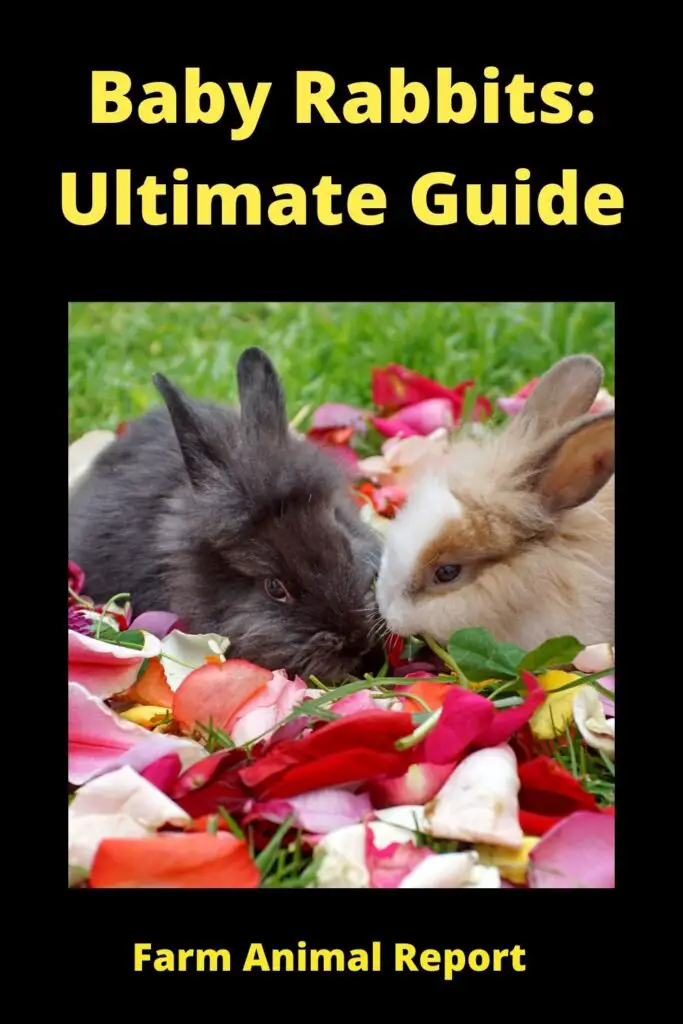
Young does may kill and consume their offspring for a variety of causes, including fear, neglect (failure to milk their offspring), and severe cold. When dogs or other predators approach, panicked does frequently kill and consume newborn bunnies. Utilizing the corpses of deceased young occurs naturally as a means of cleaning up after one’s own children. Using a doe for breeding reasons is not recommended if she has destroyed two litters in quick succession while adhering to all management guidelines.
False Rabbit Pregnancies
Rabbits are known to have fake pregnancies from time to time. In such instances, the doe may engage in typical rabbit pregnancy behaviors such as nest construction.
Taking your doe to the veterinarian is the most reliable approach to determine whether or not she is pregnant. If you wish to keep your rabbits from becoming pregnant, we recommend that you get them neutered before breeding them.
What do baby Rabbits Eat? Or What to feed Baby Rabbits without a Mother?
The most frequent question asked about rabbit parents/farmers is that What to feed baby rabbits? Or what do baby rabbits eat?
Usually, baby rabbits drink/eat mother’s milk only at the start. After a few days, the mother takes over the feeding of the baby. It is recommended that you feed your baby bunnies Kitten Milk Replacer (KMR) or goat milk if your rabbit does not have a mother. Kitten Milk Replacer (KMR) and goat milk can be purchased in pet stores or even at your local veterinarian’s office. The addition of one tablespoon of 100 percent heavy whipping cream (no sugar) to each can of KMR is necessary due to the high caloric content of rabbit milk.
The majority of kits will not nurse from the baby animal bottles that are available in stores. Instead, make use of a sterile oral syringe, which can be found at most pharmacies for a few dollars. These nipples, which come with a syringe, are a better choice, but you may not be able to find them in the local market or at the time of your visit.
When feeding newborn bunnies, it is recommended to feed them no more than twice a day; nevertheless, it is possible that it will require more feedings to get an acceptable amount of food into them, especially at the beginning.
Although the amount of food you should feed a domestic rabbit varies widely depending on the bunny breed, you are feeding and the size of the kit, the following is general advice for the amount of food to feed a domestic rabbit that will weigh roughly 5-6 pounds as an adult (average rabbit size). In the case of larger breeds, you can adjust the amounts accordingly.
Visit your local health food store (and pick up a bottle of ACIDOPHILUS) to assist the kits in maintaining healthy gut flora levels. Make sure to get the capsules that have the “grainy stuff” within them (these are simpler to mix than the “powdery stuff”), and put a small amount into the formula at every feeding.
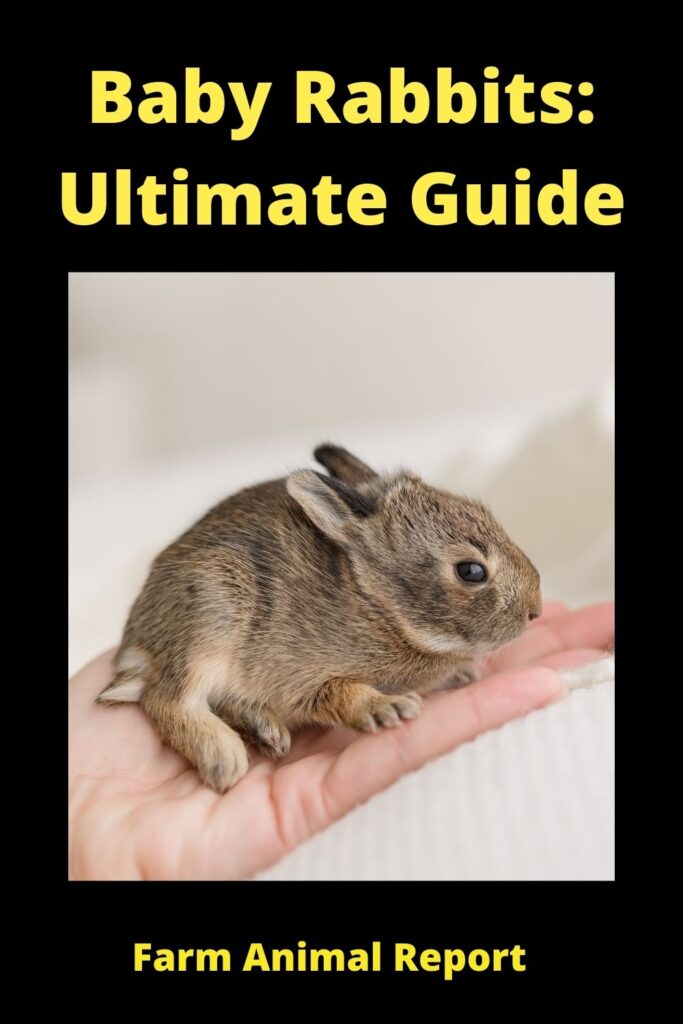
How to Feed Kits?
Baby rabbits nurse from their moms while lying on their backs. Alternatively, you can wrap the kit in a soft face cloth or hand towel and place it in your lap or in the crook of your elbow. If the bunny refuses to eat this way, you must, of course, make the best of the situation.
It is quite essential that you allow the baby to eat at his or her own pace—especially if the baby is not suckling from the syringe willingly—in order to avoid choking. If you spray the liquid into the rabbit’s lungs too rapidly, the liquid will aspirate (enter into the rabbit’s lungs), and the rabbit will suffocate.
Until their eyes open, they are considered to be asleep. The rabbit’s intestinal tract and the urinary system must be stimulated after each feeding in order to keep the digestive system and urinary system functioning properly. Apply gentle pressure to the genital area with a soft cloth or a cotton ball saturated with warm water until the bunny begins to produce stool and urine.
Continue to stroke the rabbit until it stops moving. You are mimicking the behavior of a mother rabbit who would lick her young to get them to go to the potty when they were too young to. The stool will be comfortable, and it may come in a variety of green and yellow hues as well.
If the urine is brown and gritty, the buns are not properly hydrated, and you must take them to a rabbit veterinarian as soon as possible—this is an emergency situation. Make sure to clean the baby’s lips with a wet cloth or paper towel after feeding him to ensure that no milk gets stuck in his hair.
You can start introducing them to straw and pellets on the 10th day, but you shouldn’t introduce them to vegetables or fruits just yet. Simply place some timothy or cherry and clover hay and pellets in the corner of the box where the babies can readily access them, and the box will be complete.
Make sure that the pellets are pure, high in fiber, and fresh, and they should not contain any additional ingredients such as dried banana chips or seeds. Never leave a deep water dish in which a kit could drown; instead, choose something shallow that you can rinse and refill on a regular basis to keep the infant safe.
How to Care for Newborn Rabbits without a Mother?
Caring for abandoned rabbits can be a difficult and time-consuming endeavor. Knowing what type of bed to construct for your rabbit and what kind of food to feed the baby bunny is vital since completing both of these things correctly will boost the newborn’s chances of survival if the mother is taken away from it. If you are caring for a wild newborn rabbit, try to get in touch with a local wildlife rehabilitation organization, which will be able to care for the bunny and return it to the wild.
Creating a Home for Your Abandoned Rabbit
Obtain a spare box that you may have lying around the house and fold a towel to place at the bottom of the container. Place another towel on top of it so that the bunnies can snuggle up against the towel and stay warm. Cover the box with a small blanket to make it appear darker. To allow the babies to get fresh oxygen, fold back a corner about an inch and fold it back another inch.
Ideally, it helps if you kept the box in a calm area where there would not be a lot of activity. You want the newborns to be able to sleep and remain peaceful at all times. Loud noises and hyperactive children are not conducive to the well-being of the newborn bunny population.
Maintain a temperature range of 68 to 72 degrees in the room where the box is positioned. If the room temperature drops that, you can use a heating pad on the low setting somewhere under the bottom blanket to help raise the temperature. Make certain that the heating pad is only placed in one half of the box. As a result, if the bunnies become too hot, they can shift to the side of the box where the heating pad is not present.
After that, make sure they are properly fed (with the feeding method mentioned above)
Homemade Rabbit Milk Replacer?
Homemade milk replacer can be prepared and fed to an orphaned young rabbit to ensure that he receives the nutrition he requires to survive. Ingredients for the best homemade rabbit milk replacer include the following:
- Bottle with a little nipple on the top.
- Container with lid.
- Thermometer.
- Pan.
- 1/2 cup of clean whole goat’s milk.
- 1/2 cup of kitten milk replacer.
- 1 Tbsp. of freeze-dried colostrum.
- 1/2 tsp. of thick cream.
What is the best way to create a rabbit milk replacer?
Once you’ve gathered your ingredients, you’ll need to:
- Mix the goat milk, kitten milk replacer, and heavy cream in a separate container
- Fill the container halfway with colostrum and close the lid. Shake the bottle until the colostrum is completely dissolved.
- In a saucepan, combine the homemade milk formula and heat until it reaches 105 degrees Fahrenheit. Make use of a plastic thermometer, which can be found at most pharmacies, to ensure that the formula does not become too hot. Overheating will cause the formula to lose a significant amount of its nutritious content.
- Fill a nursing bottle with a tiny nipple with the warm formula. Set aside. If possible, use a nursing bottle with nipples that have been designed specifically for newborn bunnies, which you may have to order online in advance. If you cannot locate a rabbit nursing bottle at your nearby pet store, you can purchase a nursing bottle with nipples intended for newborn kittens instead.
- Allow two or three hours before you plan to feed the baby bunny in order to allow the colostrum to settle before you prepare the homemade milk formula.
- Placing the bottle in a bowl/cup of warm water will keep it warm until you’re ready to feed the child. Warm milk is frequently more palatable to baby bunnies because it mirrors the temperature of their mother’s body.
Why is my Baby Rabbit not Eating?
There could have been a variety of factors contributing to your rabbit’s lack of appetite. Even though it would be hard to include every probable cause, the following are some of the most common:
- Anxiety – Anxiety is a typical reason for decreased appetite in rabbits. It is often triggered by events that we consider insignificant, such as a change in housing, loud music, or the introduction of a new pet into the household.
- Gastritis – Gastritis is a common condition in rabbits, which is frequently triggered by stress. They are quite uncomfortable and frequently result in a decrease in appetite.
- Urine infections – Bladder or UIT infections are painful and can cause your bunny to eat less as a result.
- Respiratory illnesses – A rabbit suffering from a respiratory infection may become ill and stop eating.
- Gut stasis/ileus – Gut stasis (also known as ileus) occurs when the digestive tract slows down or stops moving completely. Stomach stasis is a medical issue that, if not addressed immediately, can be fatal.
- Dental issues – Dental problems are uncomfortable and can often result in a reduction in rabbits’ ability to eat.
- Dietary changes – Changing your rabbits’ food all at once is likely to cause them a great deal of stress, and it may even cause them to stop eating altogether. It can also cause stomach disturbances or diarrhea in some people. If you need to change your bunnies’ diet, make sure you do so gradually over a few weeks to avoid stressing them.
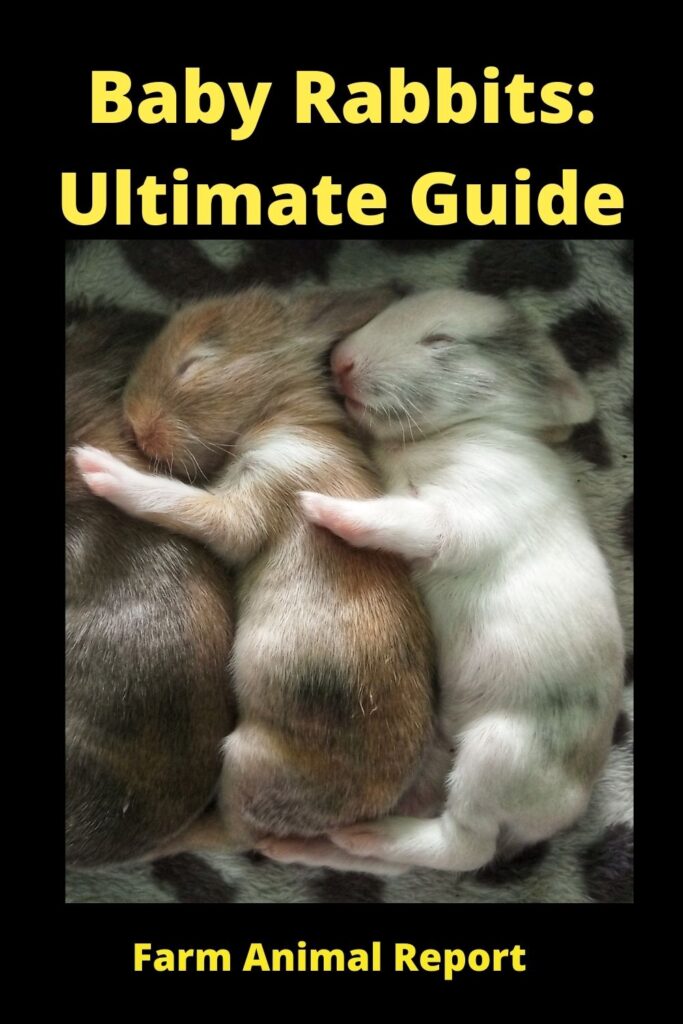
FAQs
How to Tell if Baby Rabbits are Dead?
There are only two indications that confirm the baby rabbit’s death. They are:
- It is cold
- Pool of blood
If both these signs are present, then your kits are dead (confirmed)
What are Baby Rabbits Called?
Newborn rabbits are commonly referred to as kittens or kits when they are firstborn. Kittens are born underdeveloped, with closed eyelids, no fur, and the inability to regulate their own body temperature.
When Do Baby rabbits leave the nest?
Baby young bunnies leave the nest when they are three weeks old and roughly the size of a chipmunk. If you come across a chipmunk-sized but wholly furred bunny with eyes open, ears upright, and the capacity to hop, it is likely that they were meant to be left on their own. They are not an orphan and do not require your assistance, despite their appearance of being small and helpless.
When do Baby Rabbits Open their Eyes?
Baby bunnies open their eyes after ten days, and they are weaned after three to four weeks of growth.
Final Thoughts
Domestic baby rabbits are cute indoor pets that require the same level of care as any other pet. Rabbit owners must provide a specific rabbit-based diet and make a daily feeding schedule for their bunnies. Frequent cleaning of rabbit cells/boxes, daily supervision, and outdoor time must be provided to rabbits by owners. Medical care should also be given to them by a knowledgeable veterinarian who has experience working with rabbits.


